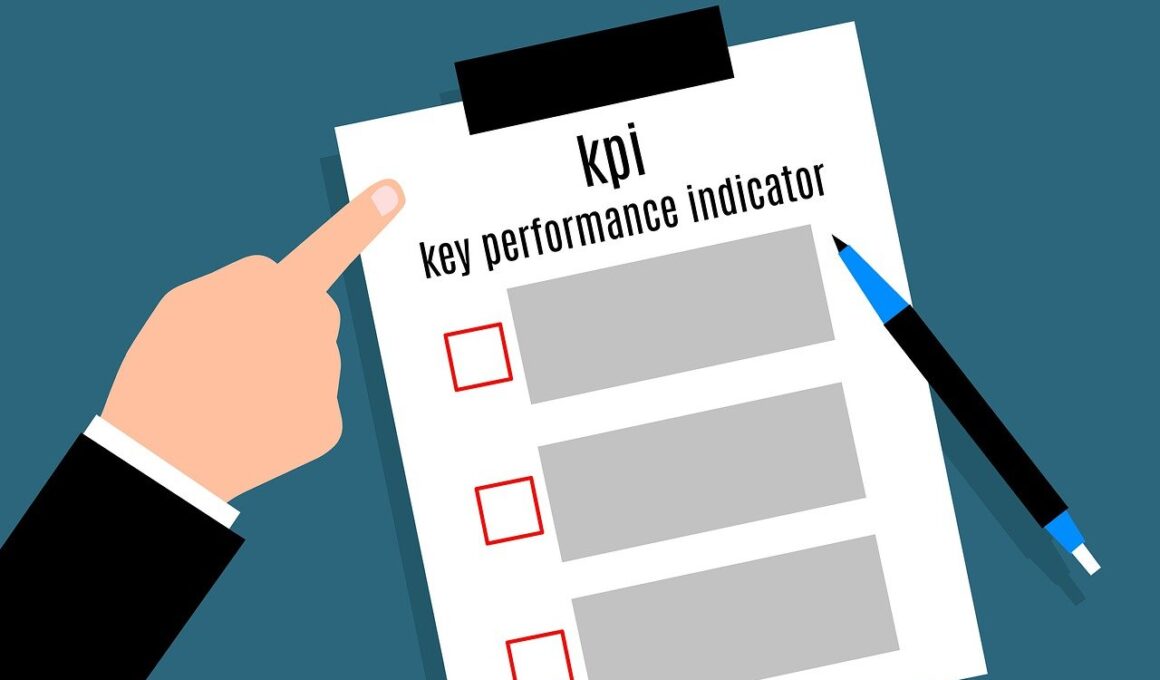Utilizing Technology to Track and Analyze KPIs
Performance management is essential for enhancing business outcomes and achieving strategic objectives. Measuring success involves an understanding of Key Performance Indicators (KPIs), which provide valuable insights into organizational performance. Utilizing technology to track and analyze these KPIs can significantly improve how businesses monitor their progress and make data-driven decisions. Various software platforms can automate the collection of performance data, ensuring real-time updates and more accurate reporting. By setting clear performance benchmarks and continuously measuring progress against them, organizations can better understand their operational strengths and weaknesses. Moreover, technology facilitates the visualization of trends and patterns through dashboards and reports, allowing decision-makers to quickly interpret complex data. This capability translates immense volumes of information into actionable insights that can shape strategic initiatives. Furthermore, incorporating mobile technology enables KPI tracking to extend beyond the office environment, making it possible for managers to access performance data from anywhere at any time. Thus, the adoption of technology in KPI development not only streamlines processes but also empowers organizations to remain agile and responsive in a rapidly changing business landscape.
To effectively utilize technology in tracking Key Performance Indicators, businesses must first identify the right KPIs aligned with their strategic goals. Each KPI should reflect critical success factors that provide insights into the performance and efficiency of different aspects of the organization. For example, sales growth, customer satisfaction, and operational efficiency are crucial metrics that many businesses focus on to ensure steady progress. Next, businesses should implement suitable technology solutions to gather and analyze data related to those KPIs. This can include customer relationship management (CRM) systems, data analytics tools, and performance management software, which facilitate streamlined data collection and reporting processes. Furthermore, organizations must ensure that their staff understands how to use these technologies effectively. Training employees on data gathering and analysis ensures that everyone can contribute to KPI tracking when required, fostering a culture of accountability and performance awareness. By integrating suitable platforms and educating team members, companies can create a cohesive strategy that effectively harnesses technology for KPI tracking and analysis, ultimately driving improved performance and decision-making.
Choosing the Right Technology for KPI Monitoring
Choosing the right technology for KPI monitoring plays a critical role in the success of performance management initiatives. Different tools and platforms serve various functionalities, and understanding the unique needs of the organization helps in selecting the best one. Firstly, organizations should assess whether they require a comprehensive performance management suite or standalone tools focusing solely on data analytics. Some companies may benefit from all-in-one solutions that encompass various capabilities, such as goal setting, tracking progress, and performance reviews. Others may prefer specific tools designed for specific metrics, such as payroll software for tracking labor-related KPIs. Furthermore, considering user interface and ease of integration with existing systems is crucial. A user-friendly interface simplifies data input and access to insights while reducing training time. Integrating new technology with current systems ensures a smooth transition and enhances overall productivity. Moreover, organizations should evaluate the scalability of technology, as growth may demand upgraded capabilities to track increasingly complex KPIs over time. Selecting the right technology involves a careful analysis of organizational needs, available solutions, and long-term goals for performance management.
Once technology has been implemented for tracking Key Performance Indicators, organizations should establish a routine for monitoring and analyzing data. Frequent reviews of KPI performance help to identify trends, adapt strategies, and make necessary adjustments to stay aligned with business goals. Regular analysis prevents organizations from operating in silos by facilitating communication between departments. Cross-functional teams can gain insights from shared performance reports, promoting collective accountability. Additionally, engaging with performance metrics enables organizations to conduct timely interventions when performance dips below established benchmarks. This proactive approach is key to maintaining a healthy organizational performance culture. Also, businesses should adjust their KPIs as necessary to respond to evolving market conditions or internal changes. Consequently, regular monitoring allows for the ongoing relevance of KPIs and ensures a continuous focus on strategic objectives. Communication is vital; disseminating reports and findings to relevant stakeholders fosters a culture of transparency and collaboration. Ultimately, the integration of technology with a systematic approach to monitoring performance creates a powerful tool for continuous organizational growth and improvement.
The Role of Data Visualization in KPI Analysis
Data visualization plays an indispensable role in the analysis of Key Performance Indicators, transforming complex datasets into easily digestible visual formats. Consequently, properly represented data enables stakeholders to identify trends, patterns, and outliers more readily. Visual aids like graphs, charts, and dashboards provide a snapshot of performance that can be quickly interpreted during meetings. Such visual representations also foster greater engagement during discussions, encouraging participation and interaction among team members. When stakeholders can easily visualize how KPIs relate to each other, they are better equipped to make strategic decisions based on the bigger picture rather than on fragmented data. Moreover, data visualization tools allow for comparing performance over time, making it easier to gauge the impact of initiatives and interventions. Businesses that utilize these tools can present a compelling narrative of their operational progress, which helps to maintain stakeholder buy-in and commitment to continuous improvement efforts. Emphasizing visualization techniques empowers teams to focus more on actionable insights rather than being bogged down by excessive numbers or complex data, thus enhancing the overall efficacy of KPI analysis.
Integrating feedback on Key Performance Indicators into performance management practices embodies the spirit of continuous improvement. It ensures that all stakeholders have a voice in evaluating the effectiveness of performance measurements and that adjustments can be made based on insights gathered. Encouraging employees to provide their perspective fosters a culture where feedback is valued and opinions count. After all, frontline staff often have significant insights into operational challenges and opportunities for enhancement. Utilizing technology tools that facilitate feedback collection, such as surveys or dedicated platforms, enables organizations to quickly identify gaps and enhance performance management strategies continually. By establishing a cycle of feedback, analysis, and adjustment, organizations are empowered to adapt swiftly to changing circumstances. Furthermore, being responsive to feedback ensures that organizational objectives are met not only based on quantitative data but also on qualitative insights that can inform decision-making. Ultimately, integrating feedback with KPI tracking likely results in optimized performance and strengthened organizational culture, encouraging collaboration and shared accountability among team members.
Future Trends in KPI Tracking Technology
Looking ahead, several trends are expected to shape the landscape of technology used for tracking Key Performance Indicators. One significant trend is the increasing use of artificial intelligence and machine learning in performance analytics. These technologies can help organizations uncover insights that might not be immediately apparent through traditional analysis techniques. For instance, AI can predict future performance trends based on historical data, allowing businesses to be proactive rather than reactive in their strategies. Additionally, cloud-based platforms are becoming the norm in KPI tracking, providing scalable solutions that enable organizations to access performance data from anywhere in the world. This shift ensures that performance management can be easily adapted to meet changing business needs. Furthermore, increased focus on employee wellness and corporate social responsibility within KPI frameworks is emerging. Organizations are now expected to track not only traditional business metrics but also social and environmental KPIs, highlighting a holistic approach to performance management. Embracing these trends will position companies to stay competitive while promoting sustainability and employee satisfaction in their operations. This shift underscores the evolving nature of performance management in our increasingly data-driven world.
Finally, the effective tracking and analysis of Key Performance Indicators is an ongoing process that requires businesses to remain agile and innovative. Organizations must continuously evaluate their performance management systems and adapt to emerging trends and technologies. Encouraging a culture of data-driven decision-making ensures that performance insights are utilized effectively at all organizational levels. By leveraging technology for KPI tracking, companies can optimize their processes, enhance accountability, and drive improved results. Moreover, collaboration among stakeholders in defining, measuring, and analyzing KPIs is paramount to ensure that all perspectives concentrate on common goals. This shared understanding strengthens the alignment between organizational strategy and performance measurement, paving the way for sustainable growth and success. In conclusion, the integration of technology in KPI development not only simplifies data management but also transforms the way companies perceive and react to performance. The result is a more engaged workforce committed to achieving excellence in their operations while continuously striving for improvement and innovation in service delivery and product offerings.


